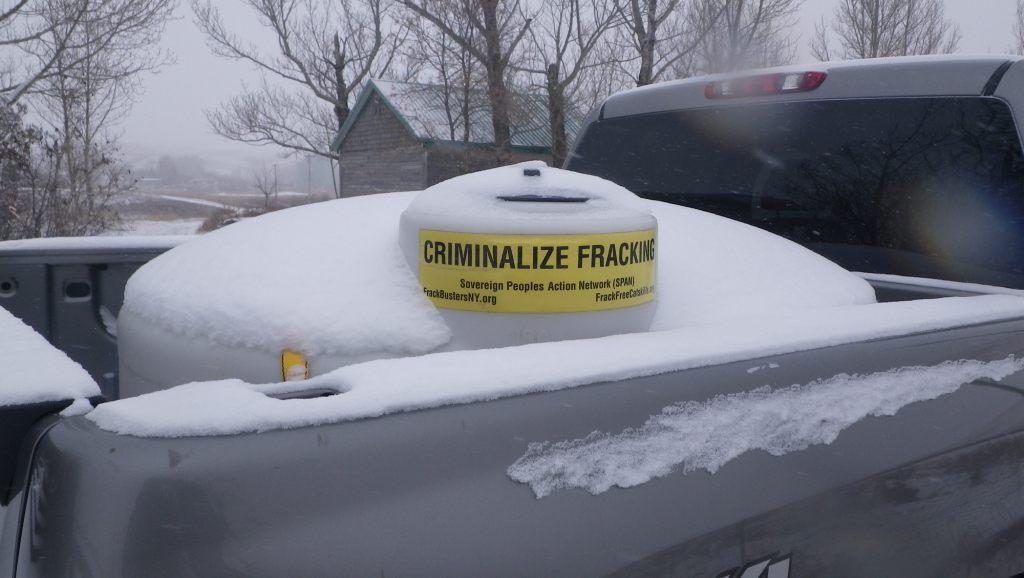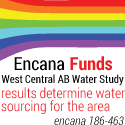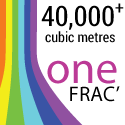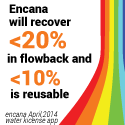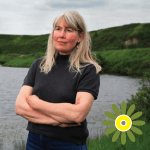
Important back ground:
A proportion (25% to 100%) of the water used in hydraulic fracturing is not recovered, and consequently this water is lost permanently to re-use, which differs from some other water uses in which water can be recovered and processed for re-use.
![]()
Water woes in southern Alberta could spell disaster for aquatic ecosystems, and the people who rely on them by David Barrett and Kerry Black, March 20, 2024, The Conversation
Authors
- David Barrett Research Associate, Faculty of Science, University of Calgary
- Kerry Black Assistant Professor and Canada Research Chair, Integrated Knowledge, Engineering and Sustainable Communities, University of Calgary
Disclosure statement
David Barrett receives funding from the Natural Sciences and Engineering Research Council (NSERC) of Canada and is involved in research projects in southern Alberta funded by the City of Calgary, Alberta Innovates, and the NSERC Alliance Program.
Kerry Black receives funding from the Natural Sciences and Engineering Research Council, the Social Sciences and Humanities Research Council, and the Canadian Institutes of Health Research and is involved in research projects in southern Alberta funded by the City of Calgary, Alberta Innovates and the NSERC Alliance Program.![]() Serving illegal aquifer frac’er Encana/Ovintiv and others in the frac industry, Alberta Innovates engaged in fraud, ignored and or altered water well contamination investigation data collected by Alberta Environment, ignored historic baseline water well records that say “Gas present: No” publicly available on Alberta Environment’s water well data base and blamed nature for the contamination by using historic water well data elsewhere (without disclosing where, or even providing the data!), and even allowed Alberta Environment to edit their supposed “independent” reports blaming nature for the life threatening unnatural methane and ethane contamination in water wells in a community-wide investigation after Encana illegally frac’d the drinking water aquifers that supply them. The purpose of frac’ing, is to force methane and ethane to let go from formations it is naturally tightly adsorbed to.
Serving illegal aquifer frac’er Encana/Ovintiv and others in the frac industry, Alberta Innovates engaged in fraud, ignored and or altered water well contamination investigation data collected by Alberta Environment, ignored historic baseline water well records that say “Gas present: No” publicly available on Alberta Environment’s water well data base and blamed nature for the contamination by using historic water well data elsewhere (without disclosing where, or even providing the data!), and even allowed Alberta Environment to edit their supposed “independent” reports blaming nature for the life threatening unnatural methane and ethane contamination in water wells in a community-wide investigation after Encana illegally frac’d the drinking water aquifers that supply them. The purpose of frac’ing, is to force methane and ethane to let go from formations it is naturally tightly adsorbed to.
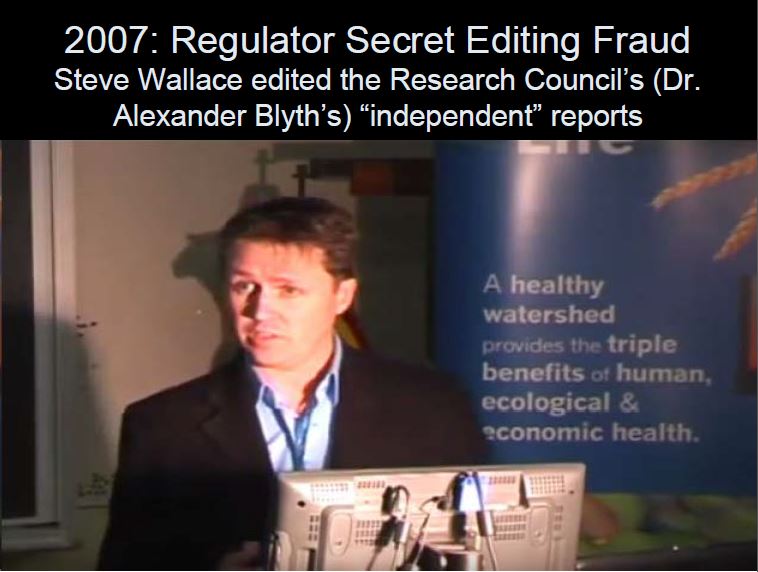
Slide above from Ernst presentations![]()
Partners
University of Calgary provides funding as a founding partner of The Conversation CA.
University of Calgary provides funding as a member of The Conversation CA-FR.
Freshwater will be an increasingly scarce resource as we head into spring and summer in Western Canada with implications for the livelihoods and economic prosperity of humans, and non-humans alike, in southern Alberta and the downstream Prairie provinces.
The Bow River — in addition to the Oldman and South-Saskatchewan sub-basins — play a vital role in Western Canada. These rivers also have a large number of competing uses including agricultural and irrigation needs, municipal uses, hydroelectric developments, industrial consumption and recreational and cultural uses — including a world-class sports fishery.
The Rocky Mountains serve as Western Canada’s water towers and are the critical source of the snowpack which plays a major role in groundwater recharge. The diminishing winter snowpack, combined with increasing frequencies of multi-year droughts in the Prairies from below-average regional precipitation, is setting up the summer of 2024 as another year of abnormally low volumes of water flowing through the basin.
Make no mistake, dwindling flows will have wide reaching social, environmental and economic impacts. Governments and policymakers must act quickly to avert a larger crisis.
Compounding impacts
In addition to impacting the water available for human use, low flows and water levels have direct and indirect impacts on the organisms that live in and rely on the aquatic ecosystem. Limited water supplies raise serious concerns about the long-term impacts on our aquatic ecosystems.
Complicating matters is the “first in time, first in right” (FITFIR) water governance principle which emerged out of the Western United States and is essentially a first come, first served system of water allocation. To make matters worse, new applications for water access have been closed since 2006, a decision which will have a “significant effect on water supply strategies available to municipal water users, as many communities currently hold water licences that are not adequate for their projected growth.”
In 2006 the government of Alberta acknowledged that “the limits for water allocations have been reached or exceeded in the Bow, Oldman and South Saskatchewan River sub basins.” In the South Saskatchewan Basin, most of the water is allocated to a handful of license holders who have had licenses for high volumes of water for years. This is a substantial hurdle to overcome when trying to retain river water for aquatic ecosystems — a goal often referred to as environmental flows or “e-flows”.
Without substantial changes to the licensing program, aquatic ecosystem health will continue to be secondary to existing license holder uses.![]() Based on how Albertans vote, notably rural, the majority and the con gov’ts they worship and keep voting for, don’t give a shit about much more than but money, ego and themselves. Given how little they care about water, other species, air, land, food, ecosystems, and communities, the majority don’t even care about the futures of their own kids and grand kids.
Based on how Albertans vote, notably rural, the majority and the con gov’ts they worship and keep voting for, don’t give a shit about much more than but money, ego and themselves. Given how little they care about water, other species, air, land, food, ecosystems, and communities, the majority don’t even care about the futures of their own kids and grand kids.![]()
Further complicating the matter is that allocations are looked at annually and not seasonally. This means that the system can’t adapt “on the fly” when low flows hit, unless there are specific government directives implemented to that effect. This is also true of current monitoring and reporting efforts across the country, with reporting and interpretation of data being done only after an issue has occurred, if at all.
Perhaps most egregiously, the FITFIR approach has also long been criticized by Indigenous groups as disproportionately impacting their water rights and limiting water supplies in favour of competing industry and large agricultural needs.![]() In favour of rich and powerful water polluters and over users.
In favour of rich and powerful water polluters and over users.![]()
Low-level impacts
Alberta’s water regulations are generally not helping matters. Currently, regulations around pollution release are predominantly applied at the end-of-pipe, not throughout the river, meaning the impacts on the river will vary based on how much water is present. This often results in poor water quality events occurring in the summer, when flow is lowest and the pollutants are less diluted. This has direct consequences on aquatic food webs and those that rely upon the river, especially in areas downstream of major sources of pollution.
Lower river flows and levels can result in increased water temperatures and decreased oxygen availability for aquatic organisms. This can have harmful consequences on sensitive species like fish and their invertebrate food sources. The projected low flows in 2024 will likely lead to increased fish mortality.
There are numerous habitats around rivers that rely on certain levels of flow to be present for survival. Riparian areas (river banks) along the river run the risk of drying up and dying off if flow isn’t adequate. While seasonal fluctuations in water levels are normal, the uncharacteristically low flows this past fall and winter, combined with expected lower water levels in the coming year may mean that these sensitive habitats are isolated for extended periods of time — not receiving the water and nutrients required for their survival.
The impacts aren’t restricted to organisms living directly in and around rivers in the region either. Low water flows affect the entire food web from aquatic insects to apex predators and with fewer prey available, larger fish populations may decline. These impacts also will only grow downstream as cumulative pressures on the river increase.
While rivers have seasonal flow patterns, low water flow isn’t just a seasonal issue. Climate change projections have been predicting more frequent and severe droughts, which will only exacerbate this issue.
Preventing drought?
2024 is likely the first of a series of years where we will see reduced snowpack, altered precipitation timing (and amounts) and increased water use pressures all combining to reduce river flows.
We have seen an initial reaction by the provincial government in Alberta; however, there has been a noticeable lack of acknowledgement from many governments and regulatory bodies across the country. This is a national issue and will be an ongoing issue as a result of climate change.
The tension between different water users has been predicted for over a decade. Policy options to date have been limited and have lacked the inclusion of ecosystem-related considerations. There also has been discussion around increasing the allowance of water which can be moved between basins. However, such systems could have major implications on aquatic ecosystem health if utilized widely and must be done with great care.
As we move through what will be an unprecedented low water year, it will be critical that policymakers, regulators and all Canadians understand the far-reaching impacts.
Our existing approaches aren’t working. We must look beyond our current systems. This includes utilizing the knowledge of water quality experts as well as Indigenous Peoples who have relied on the river for centuries.
The management issue presenting itself is extremely complex and will require equally complex responses with input from all concerned parties. But the costs of failure will be far greater than the costs of action.
![]() Why no mention of frac’ing permanently losing water to the hydrogeological cycle, thus permanently losing it to future use? Frac’ing and water injection for SAGD (stream frac’ing) and enhanced oil recovery are the only water uses in Alberta that result in permanent loss.
Why no mention of frac’ing permanently losing water to the hydrogeological cycle, thus permanently losing it to future use? Frac’ing and water injection for SAGD (stream frac’ing) and enhanced oil recovery are the only water uses in Alberta that result in permanent loss.![]()
